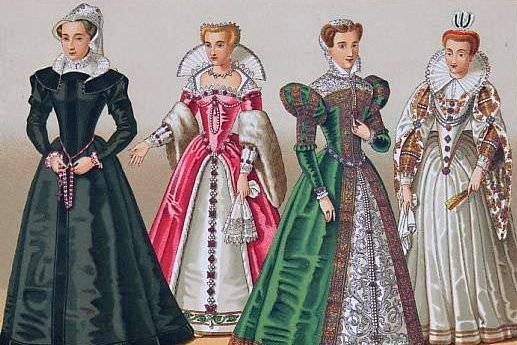Introduction
Today, the fashion industry revolves around various styles like punk fashion, Y2K fashion, Lolita fashion, Editorial fashion, and many more. However, fashion design isn’t just about making clothes; it’s an art form that mirrors the spirit of its era. From ancient civilizations to contemporary runways, the history of fashion design is a vibrant tapestry woven with innovation, cultural influences, and societal changes. This article explores the captivating journey of fashion design, shedding light on pivotal moments, trends, and designers that have left an indelible mark on the industry.

Ancient Beginnings
Fashion design traces its roots back to ancient civilizations like Egypt, Mesopotamia, Rome, and China. In these societies, clothing was more than a necessity; it symbolized status and identity. People often wore intricately designed garments made from luxurious fabrics and embellishments to signify wealth and power.

Medieval Elegance
During the Middle Ages, fashion design transformed significantly. Feudalism’s rise and the emergence of guilds led to specialized garment production. Tailors and seamstresses perfected their craft, creating clothes that mirrored society’s hierarchy. This era birthed iconic styles like the Gothic silhouette and elaborate court attire.

Renaissance Revival
During the Renaissance period, there was a renewed interest in art, culture, and fashion. Italian designers such as Leonardo da Vinci and Michelangelo found inspiration in classical antiquity, crafting garments that celebrated the human form. The invention of the printing press made it easier to share fashion trends across Europe, contributing to the emergence of fashion hubs like Venice and Florence.

Baroque Extravagance
During the Baroque era, opulence, grandeur, and excess were the hallmarks of fashion. Designers indulged in lavish fabrics like silk, velvet, and brocade, embellishing garments with intricate embroidery and lace. This period also introduced iconic styles like the corset and hoop skirt, reshaping fashion’s silhouette.

Industrial Revolution
The Industrial Revolution transformed the fashion industry, introducing mass production and consumerism. Innovations like the sewing machine and textile factories made clothing more accessible to everyone. Designers such as Charles Frederick Worth led the way in haute couture, crafting custom-made garments for the elite.

Modernism and Beyond
The 20th century saw significant changes in fashion design, shaped by social, political, and cultural movements. The Roaring Twenties introduced flapper fashion and Art Deco glamour, while the Great Depression promoted austerity and simplicity in design. After the war, iconic designers like Christian Dior and Coco Chanel revolutionized fashion with their innovative designs.

Contemporary Trends
In the 21st century, fashion design has become incredibly diverse and inclusive. Designers worldwide are breaking boundaries, embracing sustainability, gender fluidity, and cultural diversity. Social media has played a crucial role in democratizing fashion, empowering emerging designers to showcase their work and connect with audiences globally.

Conclusion
Fashion design’s history is a vibrant tapestry brimming with creativity, innovation, and cultural significance. From ancient civilizations to today’s runways, designers have consistently pushed style boundaries, mirroring their era’s spirit. Looking ahead, one thing is clear: fashion will keep evolving, adapting to our ever-changing world.





[…] fashion lovers! 🌟 Today, we’re diving into one of the most exciting transformations in the fashion world – the rise of plus size models. Gone are the days when runway models had to fit into a tiny box […]
[…] leather is revolutionizing the fashion industry with its eco-friendly, animal-friendly, and stylish attributes. By choosing vegan leather, you’re […]
[…] upon us, yes. We’re possibly getting a sequel to the iconic 2000s fashion film that brought fashion into the mainstream. Now, this information comes from Puck News and Lauren Sherman, a dynamic duo in the fashion […]